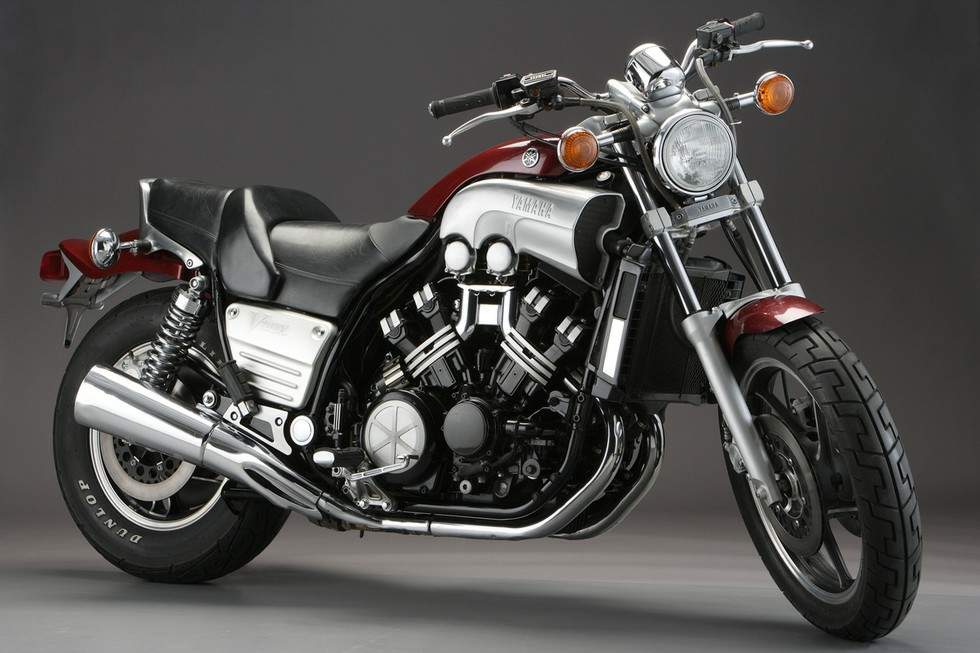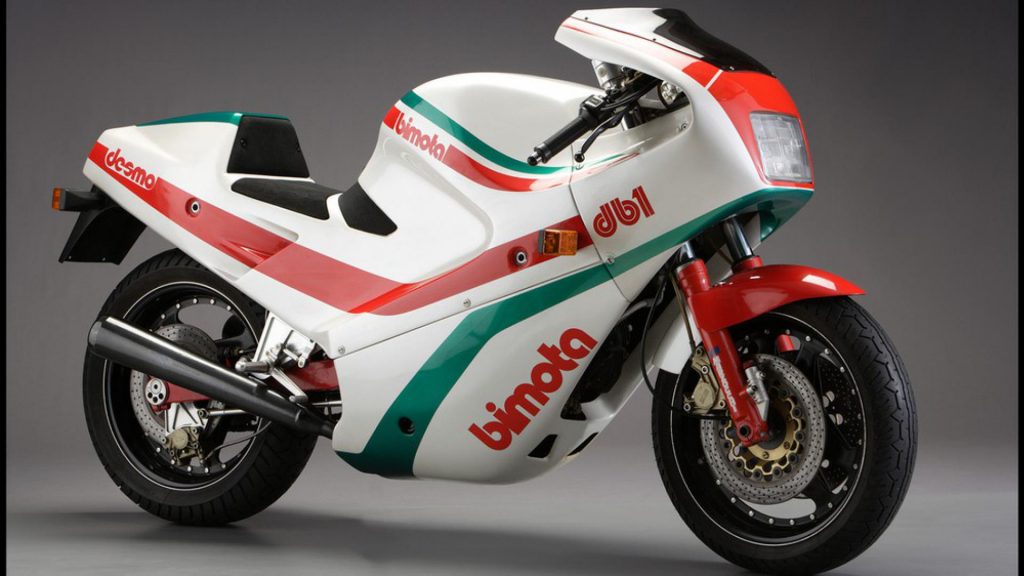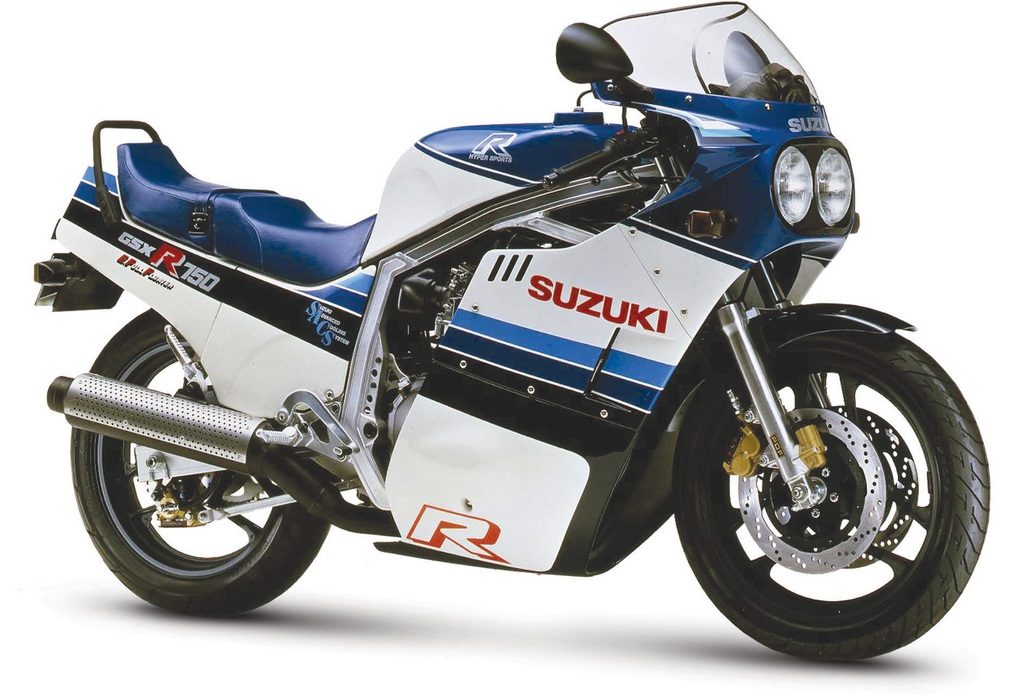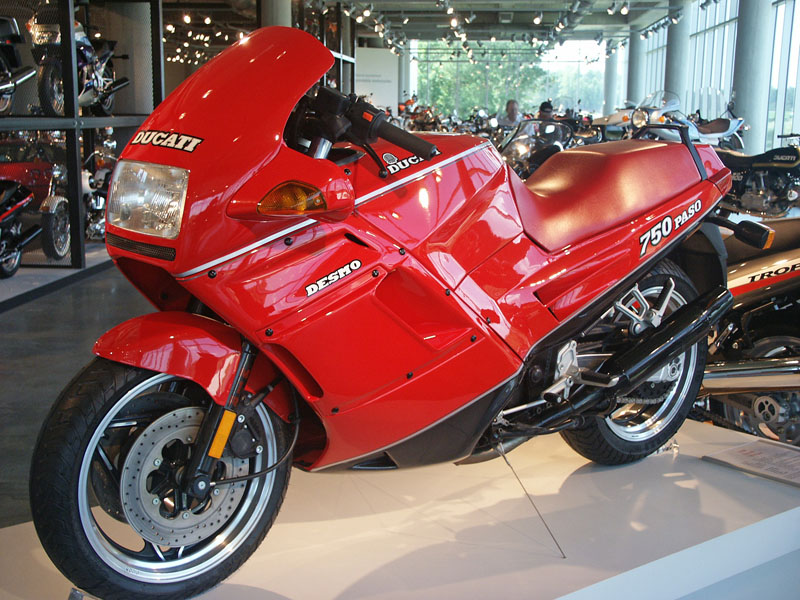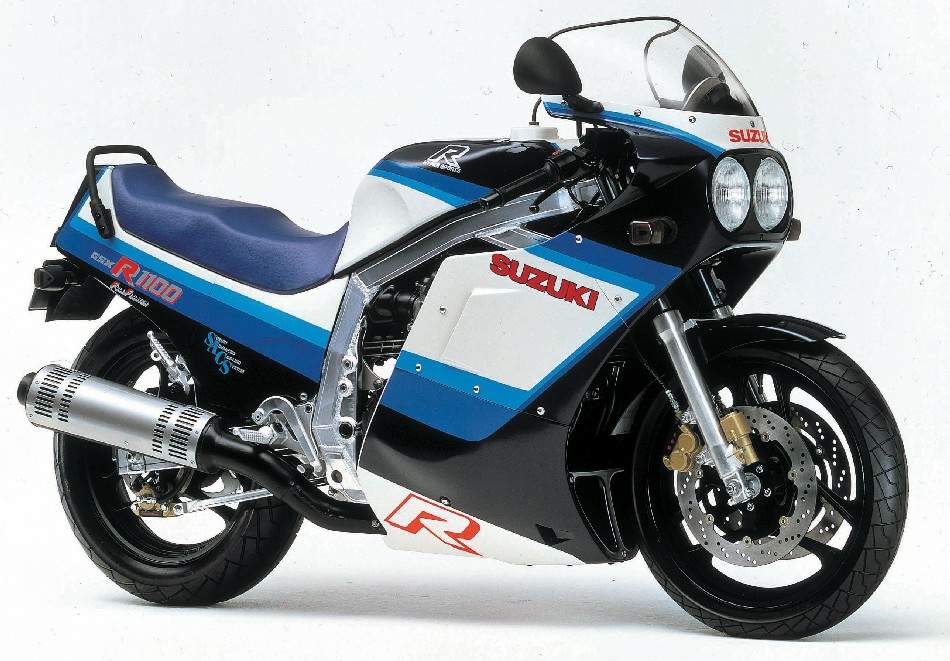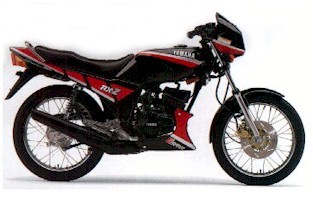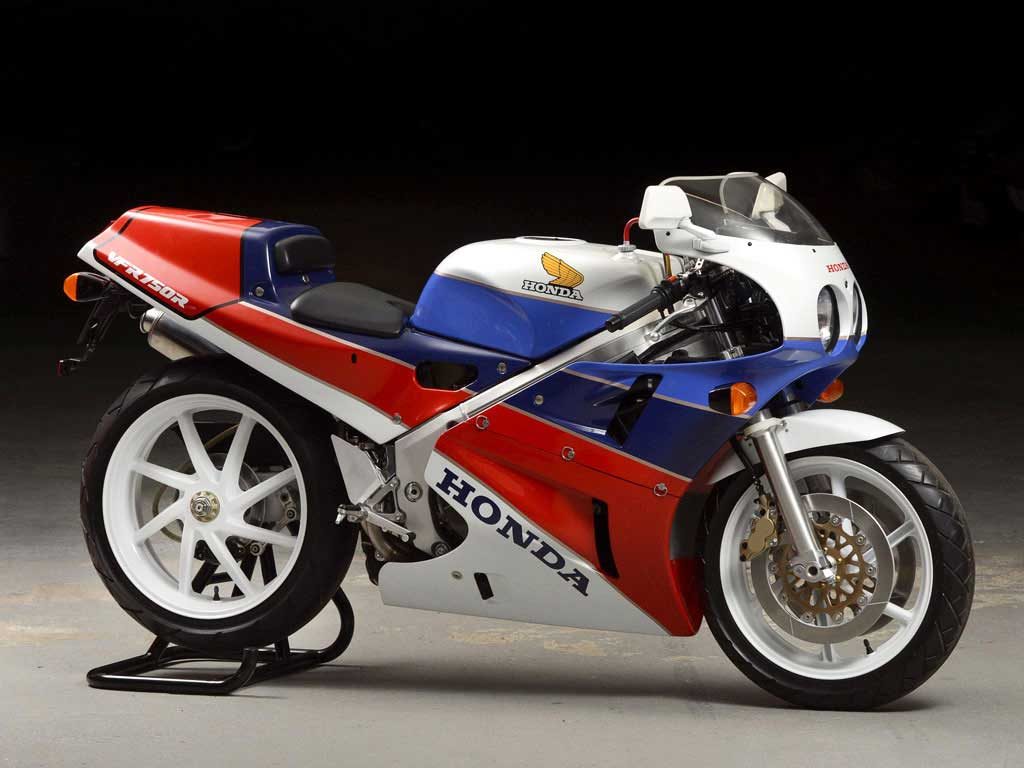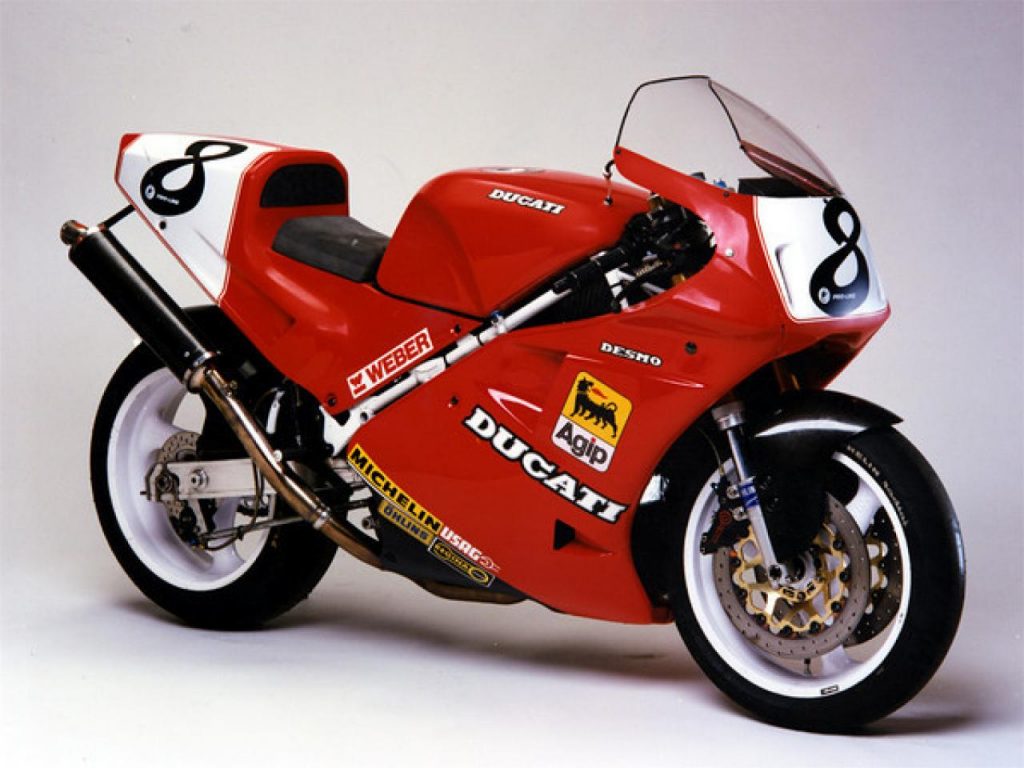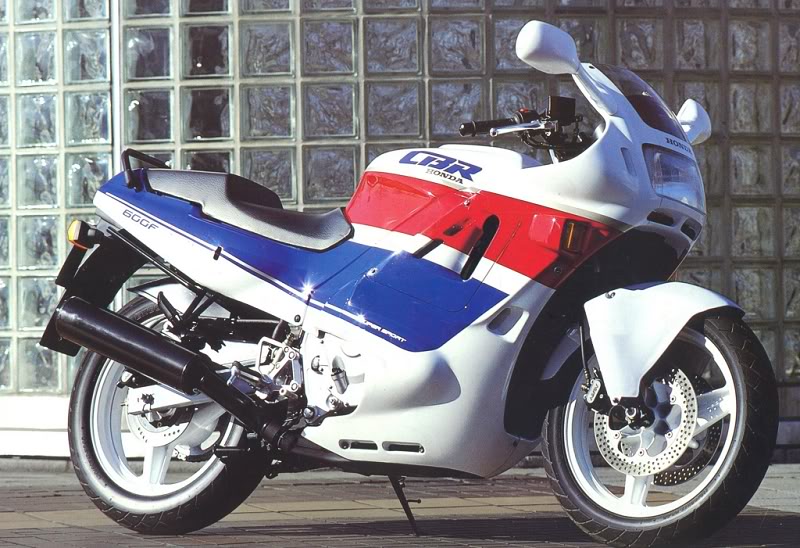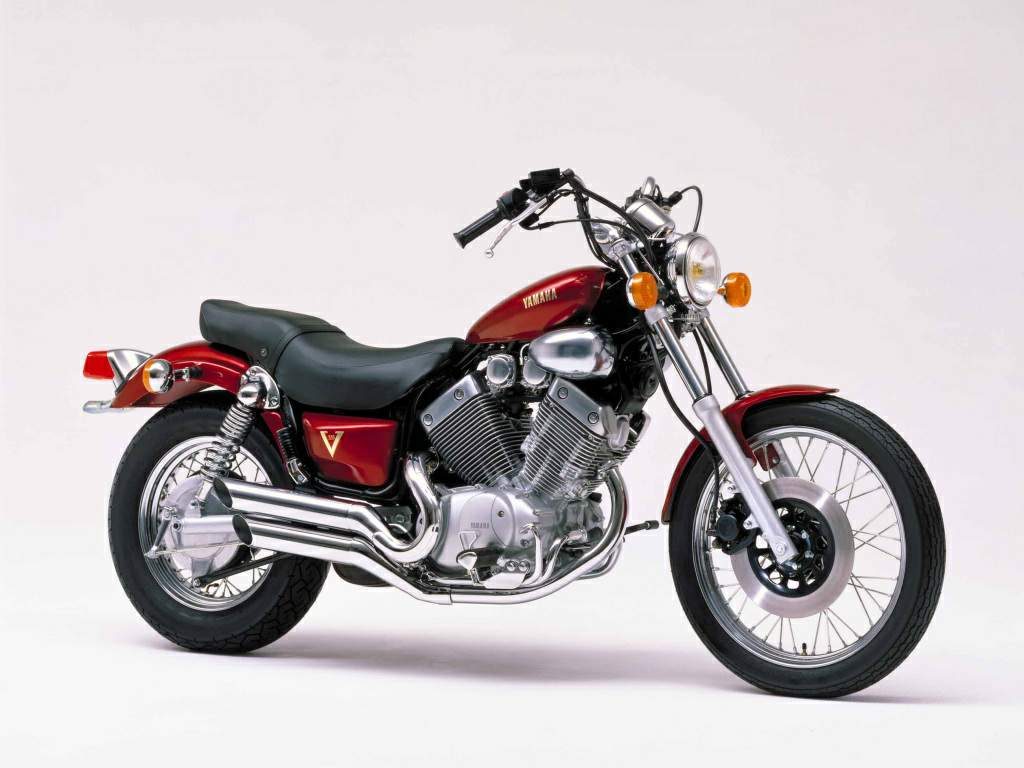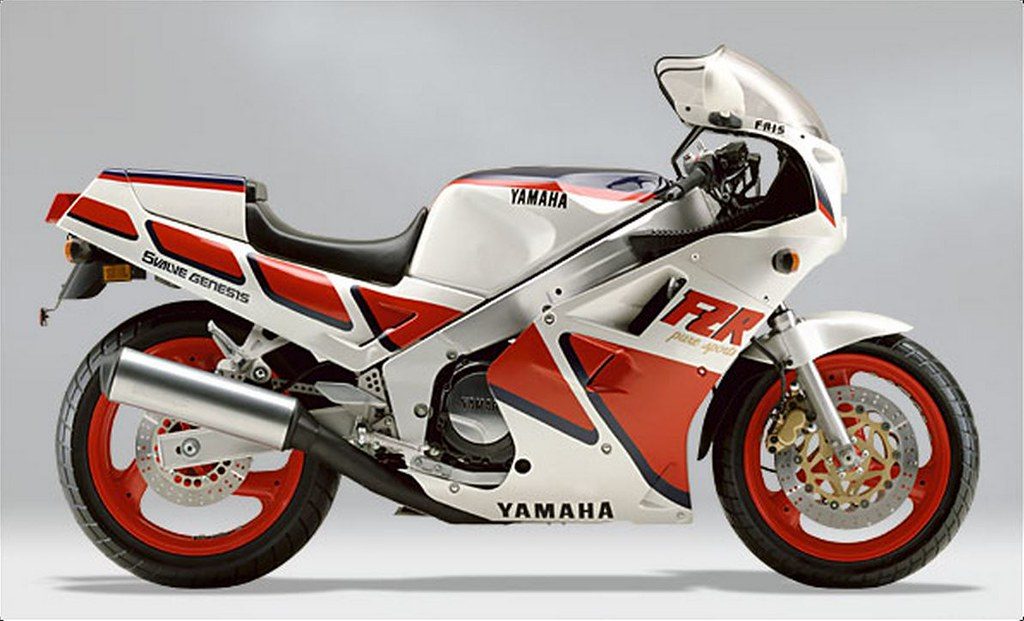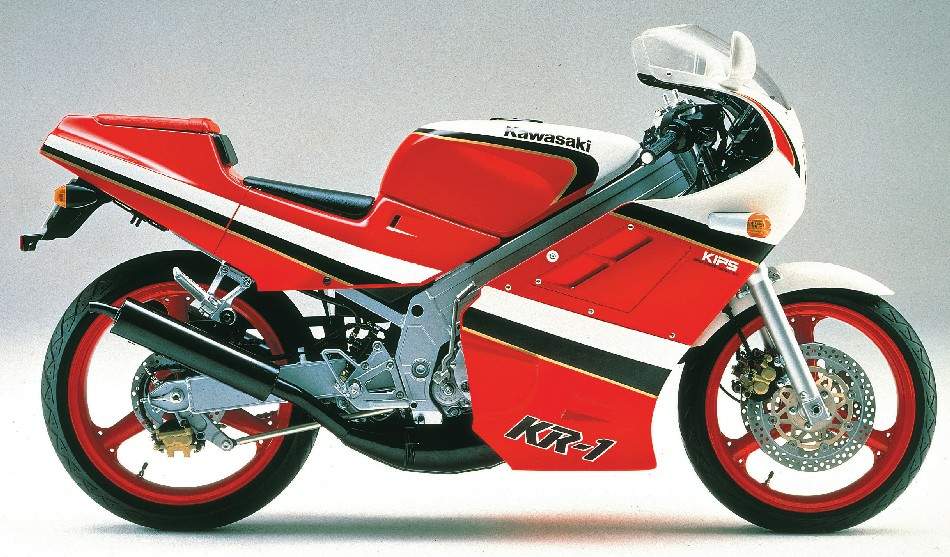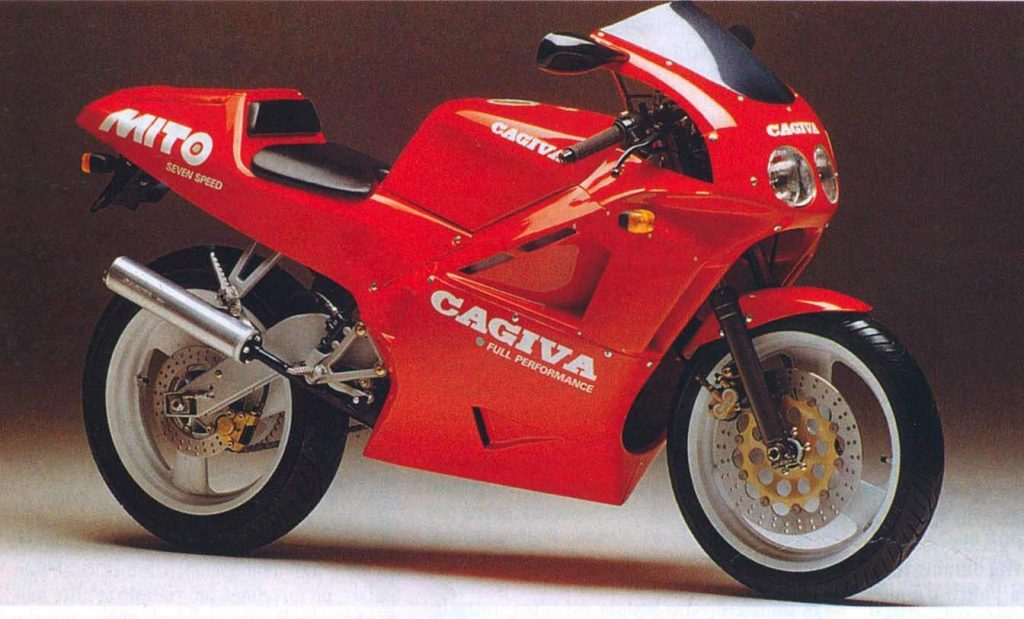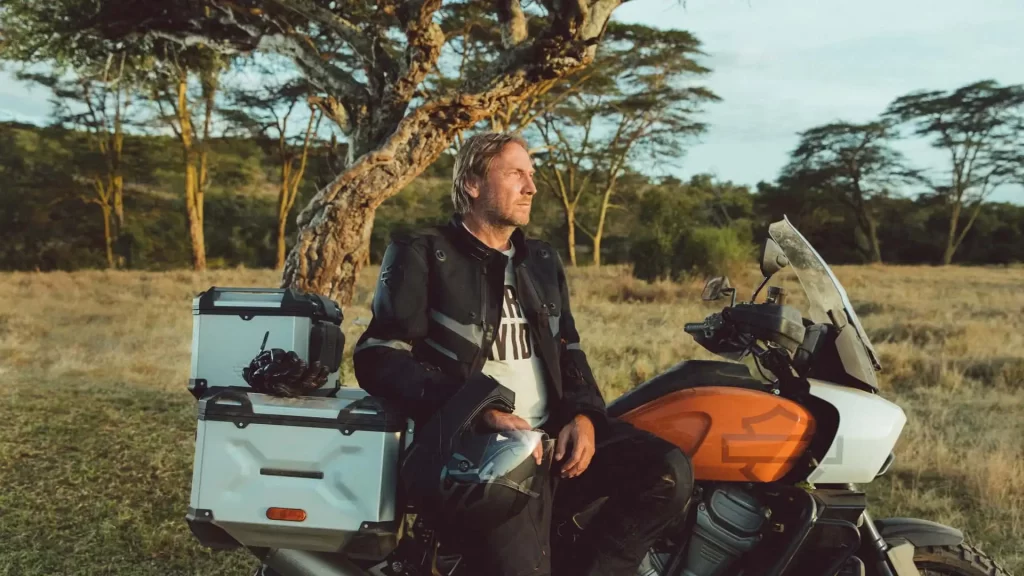-
Continuing from Part 1, the latter part of the 80s saw bikes becoming more sophisticated.
-
They had more power, better technologies and designs.
-
Many became icons till this day.
We continue with the bikes from the best era – the 1980s. (Please click here for Part 1.)
The mid-80s on were sometimes called the age of exuberance and excess. Rather than describing it, watch the Miami Vice series from that time to understand what we mean.
Bikes gained even more power, more technologies, but also became more flashy.
Without further ado, here’s the conclusion of the Motorcycles that Defined the 80s
Bimota DB1 (1985)
Interestingly, the DB1 was actually commissioned by Cagiva. Ex-Ducati engineer and Bimota’s Technical Director Dr. Federico Martini designed it.
Since Cagiva was the owner of Ducati during that time, the DB1 used a 62 hp Ducati 750cc V-Twin engine. This model formed the base, the platform as the bike was also offered as the DB1J 400cc with 42 hp, DB1S with 72 hp, DB1SR with 82 hp and DB1R with 92 hp.
Just like the Ducatis to come, the frame was a chrome-molybdenum “birdcage” which hung the engine as a stressed member. The swingarm then pivots on the engine’s crankcase. Its all-enclosing bodywork seemed to have influenced Massimo Tamburini’s Ducati Paso later, which also went on to influence the 851, 888 and 900 SS
The DB1 was credited as the bike that saved Bimota from bankruptcy at the time.
Yamaha VMAX (1985)
Oh yes! Yes yes! You want a cruiser? The VMAX was the original powercruiser and was unbeaten until the appearance of the Ducati Diavel in 2010.
It was meant to hammer other bikes into submission at traffic light GPs and blitz the quarter mile. Superbike riders would give it a wide berth when it came to a straight-line fight.
That’s because while 750cc engines in superbikes of the time produced around 100 hp, the VMAX’s 1200cc V-Four punched out 145 hp and 112.7 Nm of torque! In fact, those numbers are on par with bikes today.
It remained pretty much unchanged until a revision in 2009.
Suzuki GSX-R750 (1985)
Oh what a year! The Suzuki GSX-R750 is one of the icons in motorcycling. It’s considered groundbreaking for its influence on how future sportbikes should look like.
It had an aluminium perimeter frame, which although was not new since it debuted in the GSX-R400 in 1984, but it’s so for the 750cc class. The engine was fed by four flat slide carburettors and produced 100 hp. Suzuki engineers decided on oil-cooling to save weight against liquid-cooling. Braking also was something new with dual four-piston front calipers.
Ducati Paso (1986)
The Paso is another bike we’ve written about a number of times, because it’s designed by that great genius Massimo Tamburini. This was the first Ducati he designed after he left Bimota — the company which he co-founded.
It’s funky design was well-accepted when during its introduction but it’s now one bike which Ducati collectors would pay a ransom for.
Suzuki GSX-R1100 (1986)
This bike was expected since the 750’s introduction the previous year. But what people didn’t expect was how awesome the new 1100 was going to be!
What truly made the bike popular was its power. The 1100cc, 16-valve, inline-Four produced 155 hp and 102 Nm of torque. That’s just 18 hp off the 1999 Hayabusa’s 1300cc engine!
Taking a Breather
Let’s take a breather before entering 1987. It was heaven for rock and heavy metal lovers i.e. me. But it was the year when we saw bikes that would reverberate the motorcycle industry until decades later.
You ready?
Yamaha RX-Z (1987)
Let’s start with this icon to get your attention! It was the most popular two-stroke motorcycle of all time in Malaysia, ever. Not even the TZM150 or 125ZR could supersede the mighty RX-Z.
Starting in 1985, the chassis came from the water-cooled RD125 LC YPVS, but fitted with the famous 20 hp, 133cc, air-cooled two-stroke, and mated to a five-speed gearbox. This was the start of the bike’s complete domination of Malaysian roads.
There were numerous updates down the years, including the addition of a six-speed transmission.
“The Boss” as its known after a famous advertising campaign by Hong Leong Yamaha or just the “Zed” continued to be produced and sold until 2011.
Many are still crying about its departure.
Honda VFR750R RC30 (1987)
While Honda won many times in 500cc GP, they wanted the WSBK (before it was known as WorldSBK) title, too. So, they came out with this!
The bike was meant to be a race bike from the very get-go, instead of walking the path of other manufacturers who modify their road-going bikes for racing. (It’s pretty much like what Ducati did with the Panigale V4 R this year.)
The 748cc, DOHC, V-Four used titanium conrods (piston connecting rods) — the first for a production bike — and gear-driven cams (instead of the usual chain or belt). Its firing order was also revised with a 360-degree crankshaft for the “Big Bang” effect to offer a broader spread of power. It also had a slipper clutch.
The engine produced 118 hp, and Honda sent it into battle for superbike honours.
And they were rewarded. Fred Merkel took the bike to the inaugural title in 1988 and repeated his feat in 1989, beating the Ducati 851.
32 years on and it’s still one of the best-looking race replicas ever!
Ducati 851 (1987)
Oh yes, another icon. The 851 was a groundbreaking bike for the Italian manufacturer. After languishing for many years with the air-cooled V-Twin, engineer Massimo Bordi pushed through his design of a liquid-cooled, 4-valve per cylinder, fuel-injected V-Twin. Yes, fuel-injected. At a time when all sportbikes were carburetted.
It took a few more years of development to be competitive in World Superbike racing but it finally broke Honda’s dominance and won Raymond Roche the 1990 title. It was to be the beginning of Ducati’s dominance in superbike racing.
Honda CBR600F (1987)
Again, another bike very fondly remembered by many.
The CBR600F was Honda’s first fully-faired inline-Four sportbike, along with its CBR750F and CBR1000F siblings.
Honda had wanted to build a sportbike which could be ridden as a daily bike, hence the bike’s more relaxed riding position and power characteristics. Many buyers took a liking to it right away and it sold more than most sportbikes of the day. It was so popular that it went to become the CBR600F2, CBR600F3, CBR600F3F4, CBR600F3 and finally the CBR600F3F4i in 2001.
The subsequent CB/CBR650 models use engines based on the Hornet thus do not share the same lineage as the original CBR600F.
Yamaha Virago 535 (1987)
Ah yes. The Virago was a simple, mid-sized V-Twin cruiser which was meant for the masses. It’s most unique feature was the shaft final drive, instead of the usual belt or chain found in cruiserdom. The bike, also known as the XV535 along with its smaller 250cc sibling made huge inroads in the Malaysian motorcycle market in the late 90s.
Yamaha FZR1000 (1987)
The FZR1000 was one of the powerhouses of the late-80s. Its engine made a mighty 145 hp during a time when traction control wasn’t even a conceivable concept. The bike laid down 0-100 km/h in 2.9 seconds and a top speed of 269 km/h.
Oh yes, it had a 5-valve-per-cylinder head, too. Yamaha called the project “Genesis.”
BMW K1 (1988)
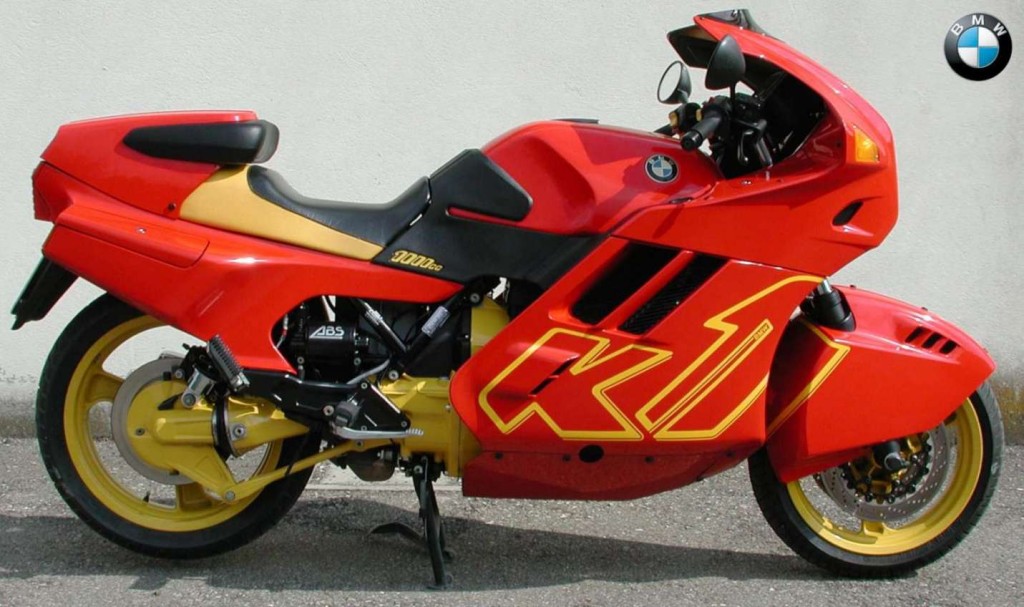
The K1 wasn’t radical as motorcycles of the decade are but it was radical for BMW. The manufacturer wanted to show that they don’t just make bikes with Boxer engines, although the K1 was shaft driven.
While it the entire bike was covered in wraparound bodywork, it was a sport-tourer rather than a sportbike.
The 100 hp, 987cc, 16-valve, DOHC, inline-Four was fuel-injected controlled by a Bosch ECU with three-dimensional mapping, giving the bike a top speed of 240 km/h.
Ducati SuperSport/SS (1988)
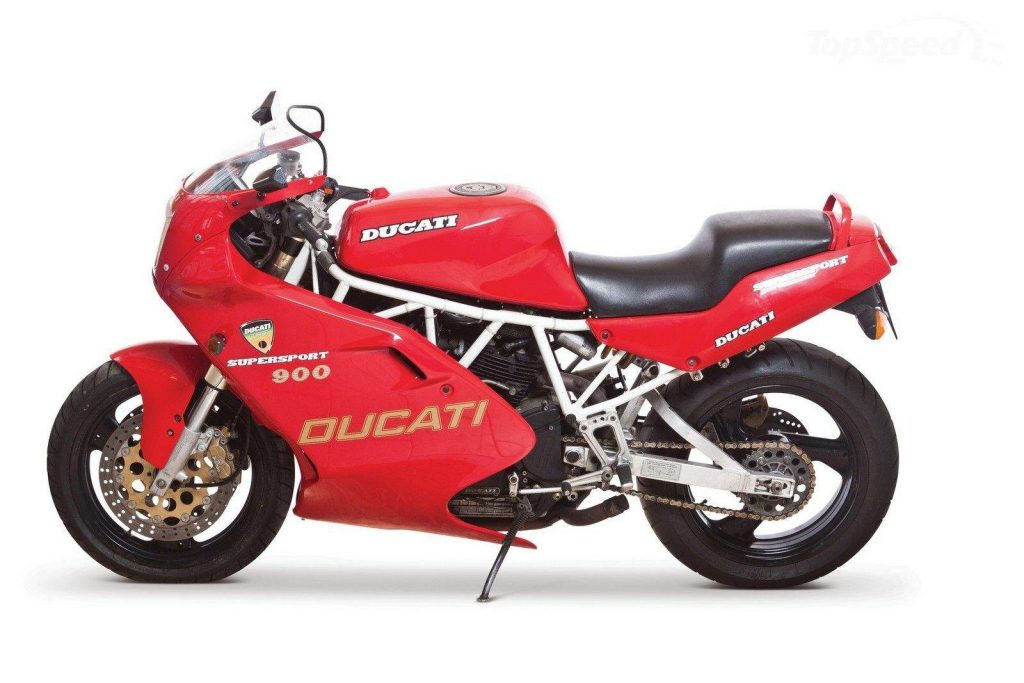
The SuperSport name had been a mainstay in Ducati’s heirloom but this particular iteration featured a new bodywork, while using the 904cc, two-valve per cylinder, 90-degree V-Twin from the Pantah. The crankcase was derived from the 851. Using a dry clutch, it gave off that signature metallic rattle that Ducati fans have come to love. The booming exhaust note was another signature feature.
Initially available with a half-fairing (900 CR) a fully-faired bike, (900SS) which looked a lot like the 851 sportbike. Ducati also produced the limited edition 900 SuperLight (SL) in 1992.
Kawasaki KR-1 and KR-1S (1988)
Believe of not, Kawasaki did produce a monster two-stroke 250. But unlike their competition, it wasn’t based on a race bike as the manufacturer doesn’t one. Despite that, the KR-1 was the most powerful and fastest production 250 two-stroke. The 249cc parallel-Twin produced 54 hp and took the bike to 225 km/h, beating out more fancied models such as the Aprilia RS250, Honda NSR250R, Suzuki RGV250 and Yamaha TZR250.
The S variant had different colour schemes and components.
Cagiva Mito (1989)
As the decade came to a close, one bike stood out among the rest. Although not exported to the United States, the Cagiva Mito was famous and was the dream of every schoolboy everywhere else.
In fact, a young Valentino Rossi has one before he went on to become the famous racer he is now. He was given a Mito by Cagiva team boss Claudio Lusuardi in 1994 and wiped everyone on the track with it on his way to the Italian championship title.
The Mito went through a number of revisions, including getting a seven speed transmission. It also took on the look of the Ducati 916 in 1994, having been designed by Massimo Tamburini himself.
Conclusion
Well, that’s part of the 80s. There were many more great bikes but we just don’t have the space to list them all. Tell us what you’d like to see and we’d try to feature them in the future.
(Please click here for Part 1.)

